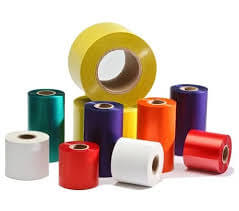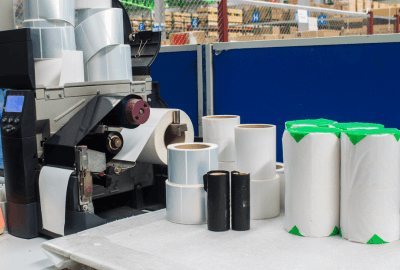
Barcode technology in the inventory management sector offers the key to accuracy, efficiency, and organization. One of the often-overlooked components of barcode printing is actually the barcode ribbon. The following blog discusses the types of barcode ribbons and compares them to find which is the one you need for your business.
Understanding Barcode Ribbons and Their Importance
Barcode ribbons are applied in thermal transfer printing. They transfer ink onto labels or tags. This is unlike direct thermal printing that does not use ribbons and is suitable only for temporary labels. In thermal transfer printing, it creates labels which are quite durable and long-lasting enough to survive wear, water, and all sorts of environmental exposures. Barcode ribbons are simply so clear and very durable, which are needed in asset tracking, shipment labels, and product identification.
Types of Barcode Ribbons
Barcode ribbons are categorized by the type of coating material used in the ribbon. The common ones include wax ribbons, resin ribbons, and wax-resin ribbons. Each of them has some unique features depending on their applications.
- Wax Ribbons
Wax ribbons are printed with wax-based ink, which has a relatively lower melting point.
Advantages of Wax Ribbons
- Cheaper and economical, in case of high-volume prints.
- Suits paper labels intended for general applications such as shipping, retail, and the tracking of inventories.
- Prints are clear but less durable compared to other types.
Disadvantages:
- Prone to smudging and scratching.
- Not recommended for application where exposure to high temperatures, chemicals, or rough handling is likely to occur.
- Resin Ribbons
Resin ribbons are those in which resin is used in the ink. They require a higher temperature for melting and transferring to the label.
Advantages of resin ribbon:
- Highly resistant to abrasion, moisture, and chemicals.
- This is an ideal ribbon for printing onto synthetic labels, including vinyl, polyester, and polypropylene
- The prints last for long and remain clear and bright for an extended time period
Disadvantages:
- This is more expensive than that for wax and wax-resin ribbons
- These necessitate particular surfaces for bonding; therefore their applicability is limited 3.
Wax-Resin Ribbons
A wax-resin ribbon combines the affordability of wax ribbons with some durability benefits of resin ribbons. Thus, in applications requiring a moderate level of durability, but certainly not extreme conditions, wax-resin ribbons are a very balanced choice.
Advantages of Wax-Resin Ribbons:
- Better durability than wax ribbons but without the added cost of resin ribbons. Coated paper and some synthetic labels.
- Durable and resistant to smudges, and chemical bases; ideal for shipping and outdoor labels.
Disadvantages:
- Less durable than resin ribbons.
- More expensive than wax-based ribbons.
Barcode Ribbon Types Comparison
Select a barcode ribbon that fits your requirements. It depends on environmental conditions, label material types, and durability needed. Here is a summary of characteristics to help you determine the best one:
| Criteria | Wax Ribbons | Wax-Resin Ribbons | Resin Ribbons |
| Durability | Low | Medium | High |
| Best for | Paper labels, general use | Coated paper, synthetic labels | Synthetic materials, industrial |
| Resistance to | Light smudging | Moderate smudging, some chemicals | Abrasion, chemicals, moisture |
| Cost | Low | Moderate | High |
Conclusion
Choosing the right barcode ribbon is essential for achieving the quality and durability you need in your labels. Whether it’s wax for affordability, wax-resin for a balance of cost and durability, or resin for ultimate resilience, barcode ribbons play a critical role in effective barcode printing. Understanding these options can help you make an informed decision for your business needs, ensuring your barcode labels serve their purpose efficiently and reliably.

